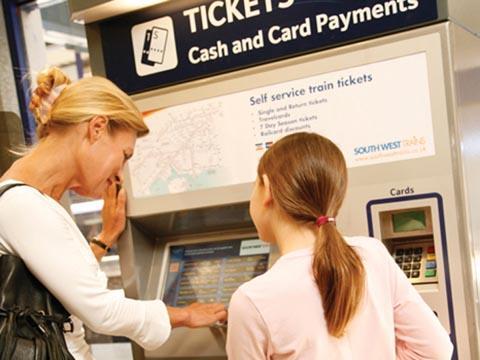
It used to be so simple. If you wanted to book a rail journey, you would go to a station — or possibly a rail-appointed travel agent — and buy a ticket. But today many bookings, whether domestic or international, are fraught with complexity. The hurdles facing those wishing to choose rail for cross-border journeys in Europe have been well documented, and are typified by the aborted Railteam alliance and the success of independent travel blogs such as Mark Smith’s Seat 61.com.
The past decade has seen an emerging focus on making rail tickets more ‘visible’ as a travel option against other modes. With travel retail shifting inexorably into online channels, technology companies including Amadeus and SilverRail have sought to build partnerships with train operators. These have sought to address operators’ distribution, reach, yield management and customer relationship management capability.
Amadeus was established in the 1980s by a consortium of four European airlines to manage an increasingly complex inventory and distribution IT network. Since 2007, it has hosted a Rail Forum; the latest took place in Praha on June 13. The event raised the prospect of more profound change in the retail landscape. Third party distributors and tech-savvy back office specialists are no longer merely seeking to help train operators to access hard-to-reach market segments, like cross-border journeys, corporate travel agencies or inbound tourists. Instead, they want to take on the entire retail operation. ‘It is tough to convince the railways to let go of their back office’, says Amadeus’ Head of Rail Antoine de Kerviler. ‘But if train operators do not manufacture their own trains, why do they still oversee production of their distribution systems?’
Online travel agency Expedia’s decision in May to purchase a majority stake in SilverRail (RG 6.17 p21) may yet prove a significant step in this direction, coming just over two years after SilverRail bought Swedish national operator SJ’s ticketing IT business. At the time, SilverRail pointed out that 86% of Swedish rail tickets were purchased on a mobile device. Online ticket retailer Trainline has expanded from its roots in the UK into Europe after it acquired French rival Captain Train. Now Trainline is playing a central role in pro-liberalisation association Allrail, arguing that neutral distribution can be a driver of on-rail competition.
Looming in the background is the spectre of Google and potentially other Silicon Valley heavyweights. Google’s Maps application includes rail timetable information in some territories, and since 2013 the company has offered airline search and price comparisons in Google Flights. But for now it is hard to see Google embracing the complexity of rail booking, even in domestic markets.
Yet such is the pace of change that the concept of a ‘rail booking’ could appear antiquated very soon. Already, ‘mobility as a service’ is the catchphrase of choice among disruptors, signifying the growing importance of intermodality. A ‘Rail Express Hack’ at the Amadeus forum was won by a team proposing a crowdsourced taxi sharing app that would locate rail passengers arriving at a hub station at around the same time and offer them ‘last mile’ rides. Asked if their idea could be adapted to divert groups onto a convenient connecting suburban train or metro, the modally agnostic participants seemed shocked, and promised to add the function in. Speaking at the SERA convention in Brussels on June 20, Sampo Hietanen of MaaS Global, which runs the ‘Whim’ multimodal journey planning and payment app in Helsinki, argued that main line railways should participate in an emerging model that simplified users’ door-to-door travel and reduced the attractiveness of car ownership.
Amid all the talk of embracing digitisation, the complex reality of managing the back office processes of the modern passenger railway can sometimes be overlooked. Legacy benefits, while perhaps costly to maintain, confer significant advantages. In Praha, Fabian Soulet explained SNCF’s progress with developing ‘chatbots’ to work with Facebook Messenger. Yet reports reach us that SNCF has ceased selling long-distance tickets at suburban ticket offices in Ile-de-France, encouraging customers to purchase online, bringing with it an inevitable assumption about potential passengers being digitally savvy.
Ticketing reform is also underway in the UK amid political pressure to ease the perceived burden on farepayers. Yet it is pertinent to ask if several years of growing ridership is really a sign that rail users are deterred by the complexity of interavailable ticketing? Indeed, the decision to preserve a central structure for ticketing and impartial retailing when British Rail was broken up in the 1990s now seems one of the wisest decisions of the period. Liberalisation processes elsewhere in Europe have arguably not seen such strict attention paid to ‘whole network’ benefits.
As railway managers grapple with a rapidly changing mobility landscape, there is a clear opportunity for tech-savvy disruptors and specialist partners bringing expertise from other sectors. But a holistic approach to selling rail is essential, reflecting the reality that passenger trains are not solely ‘aircraft on the ground’. The diversity of the passenger market remains a core strength of the rail mode. We can and should embrace it.

















